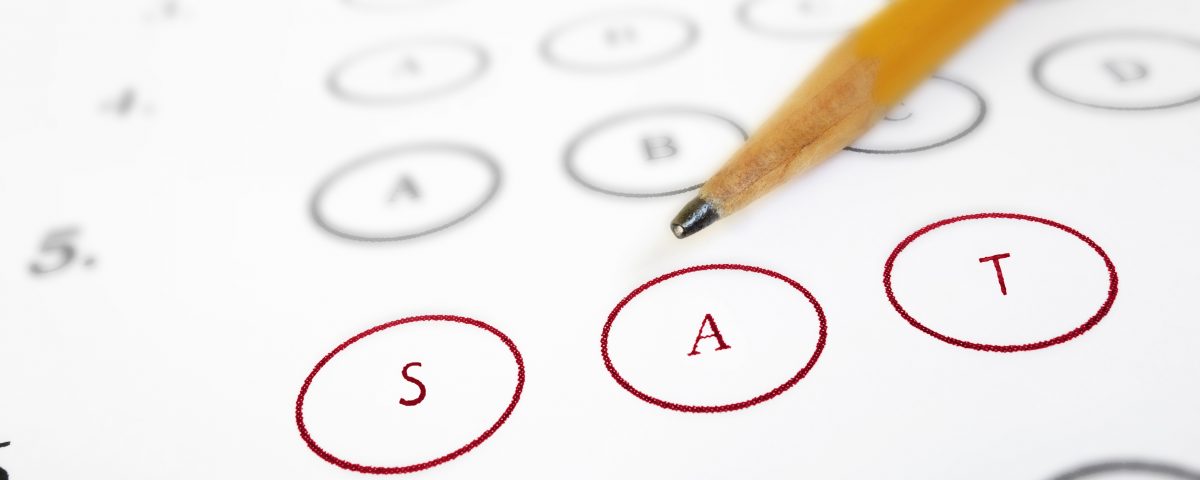New SAT Changes: What You Need Know

Time-Management Tips for Homework
March 8, 2022
Key Considerations for Homeschooling Students
April 4, 2022In recent years, colleges and universities across the nation expressed strong disapproval of the SAT. According to Forbes, more than 1,815 schools went test-optional this past year. Meanwhile, the University of California and Pitzer College went completely test-blind in college admissions. In an attempt to adapt to this emerging trend, the College Board—a private, non-profit organization that develops and administers the SAT—made major changes to the SAT.
A new digital format, a shortened test period, the open use of calculators, and faster results are among the significant changes the SAT underwent. International students can access the updated test in 2023, followed by a 2024 launch in the United States. If you want to know more about the SAT and an in-depth explanation of its changes, Test Prep Score happily outlines what students and parents need to know.
What is the SAT?
The SAT is a standardized test used for college admissions in the United States. The test measures literacy, numeracy, writing skills, and problem-solving skills needed for academic success in college and beyond. Universities and colleges evaluate SAT scores because they are a standard way to judge students. Colleges and universities look at students’ SAT scores, along with high school transcripts, letters of recommendation, and extracurricular activities as part of the admissions process.
The test has a multiple-choice question format and contains two main sections: evidence-based reading and writing, and math. There is an optional essay at the end of the test. Students can earn a score between 200 and 800 per section for a total of 1,600 possible points on the SAT. There are 96 questions constituting the evidence-based reading and writing section which takes 1 hour and 40 minutes. As for the math section, students have 1 hour and 20 minutes to complete 58 questions.
Lastly, the optional essay takes 50 minutes to complete. Overall, the SAT clocks in at 3 hours and 15 minutes, including breaks. However, an additional 50 minutes is required if you complete the optional essay, which bumps the total testing time to 4 hours and 5 minutes with breaks. Over the years, College Board has continually made changes to the SAT. In 2005, the 50-minute essay was added to the test and required to be completed. However, the essay received backlash and was made optional in 2010.
The New Digital Format
Undeniably the greatest overhaul to the collect entrance exam, the SAT transitioned to a digital format that’s accessible through laptops and desktops. Students will take the SAT on a laptop, tablet, or desktop, using a custom-built digital exam application that they’ll download in advance of test day. However, students will continue taking the test in person at designated testing locations with official proctors. In other words, students aren’t completing this test at home. U.S. News reports that the new test will be adaptive.
Nearly all adaptive tests are computer-delivered and adjust as students take them. An adaptive test changes the level of difficulty for subsequent questions based on student performance. For example, if a student answers a series of questions correctly, ensuing questions will be slightly harder. Similarly, when a student answers a series of questions incorrectly, future questions will be moderately easier. Adaptive tests are more secure than paper tests because each test is unique making it nearly impossible to cheat.
Shortened Test Length
For students and proctors alike, the whole testing process is being significantly shortened. Primarily, the testing period is condensed from three to two hours. With testing completely digital, proctors will no longer organize and distribute testing materials. The College Board decided to compress the multiple-page readings into smaller passages. The new passages only require students to answer a single question instead of multiple. The test will continue evaluating the same core reading, writing, and math knowledge and skills but more efficiently.
Students will also have more time per question. The SAT will be divided into two modules (Reading/Writing and Math) where students answer the first set of questions before moving on to the next. Students will have a break in between modules. Even with these changes, the SAT will remain on a 1,600-point scale.
Open Use of Calculators
In the past, students faced a math section with two parts: non-calculator and calculator. However, a notable change allows calculator usage throughout the entire math section. Students have two options; bring their physical calculator or use a digital one on the computer or laptop. If a student forgets to bring their calculator, they can use a digital one. Whether you need it or not, a calculator is available for all questions in the math section. The questions will cover the same material as the previous.
Rapid SAT Scores
Instead of dealing with the stress of waiting weeks for your test results, students receive their scores in only a few days. In addition to basic scores in each section, the reports show you an analysis of your score and provide percentile rankings. The SAT provides you with your total score out of 1600 which breaks down into two section scores: evidence-based reading and writing and math. Additionally, the SAT provides you with test scores for reading, writing, language, and math which range from 10 to 40. If you decide to write the essay, you are provided with scores for reading, analysis, and writing which each range from 2 to 8. There are also two cross-test scores for analysis in history/social studies and analysis in science which range from 10 to 40.
Lastly, the SAT breaks down your performance into seven skill categories which provide you with a clear picture of your strengths and weaknesses. Within evidence-based reading and writing, there are subcategories of command of evidence, words in context, expression of ideas, and standard English conventions. As for math, there are subcategories of the heart of algebra, problem-solving and data analysis, and passport to advanced math. The sub-scores range from 1 to 15. Your results also provide information on scholarship opportunities and colleges.
How the SAT Changes Impact You
The SAT can be an incredibly stressful test for aspiring college students. However, Newsroom says 80% of students responded to a survey stating they found the new digital test less stressful and 100% of proctors reported having a positive experience. A pilot test coordinator from China explained, “The highlight for me is at the end of the test day, no packaging of paper and tests, no forms to fill out and I didn’t have to spend another half hour at the test center just to make sure that things are done.” In response to a lack of equity and criticism around the high cost of taking the SAT, College Board is implementing free preparation resources, fee waivers, and weekday testing.
Hiring a Professional SAT Tutor
The notable changes to the SAT make the test more equitable for all students. The new digital format relieves burdensome stress that allows students to perform better. If a student does not have a computer, they can request to borrow one from College Board and it will be provided on testing day. Shorter passages help students concentrate on what the question wants them to answer. If students don’t have a calculator or don’t wish to bring their own, they have access to the digital calculator on their computer or desktop. Above all, students will receive their scores in a matter of days.
Even with the notable improvements, students still need to study to do well. SAT tutors help students master content and prepare them for the digital format. Test Prep Score offers tutoring services that are designed to address each student’s unique learning style.
If you require professional SAT tutoring, visit Test Prep Score to browse an array of qualified tutors and premium test-prep services.


